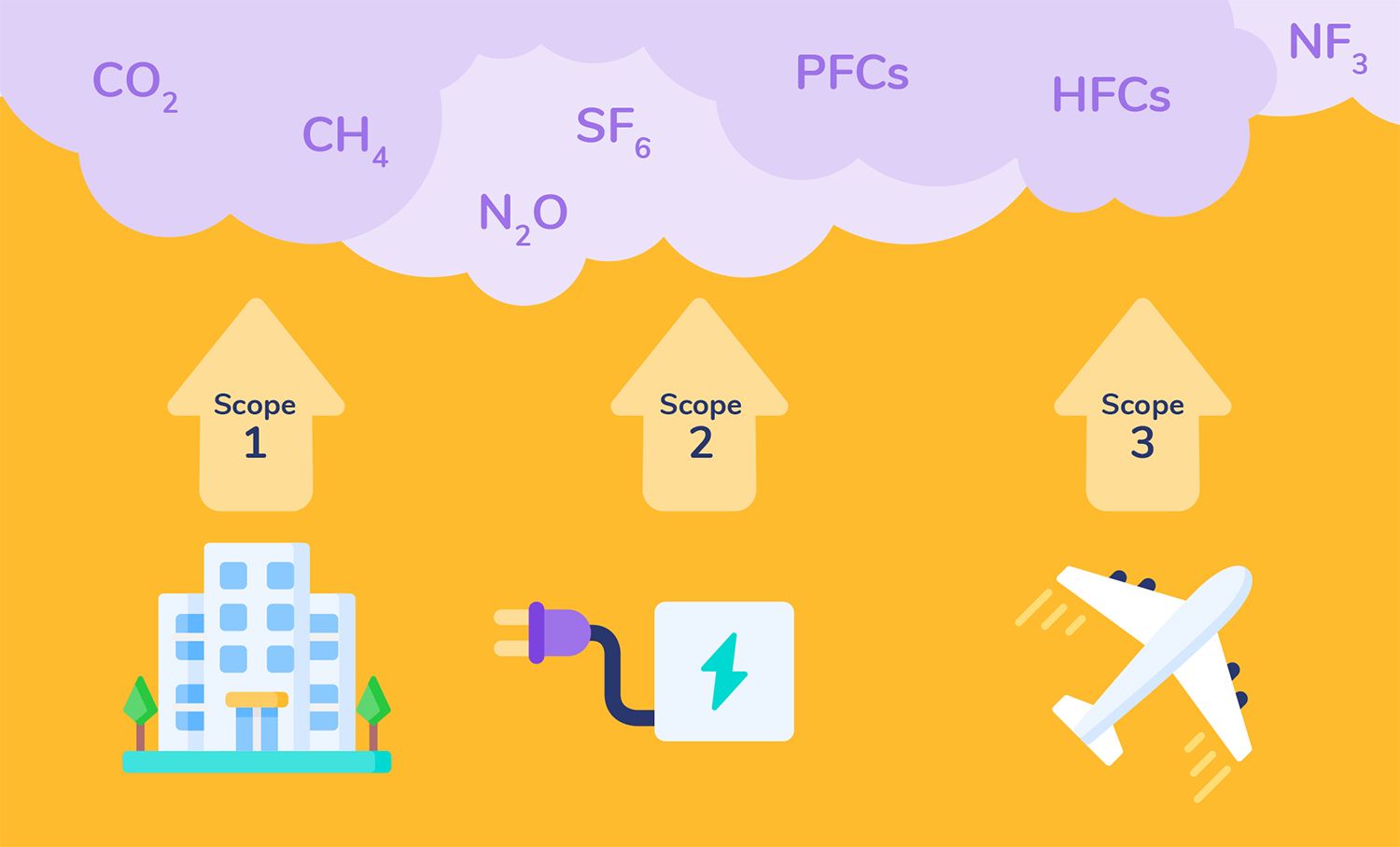What is the Greenhouse Gas Protocol?
The terms scope 1, 2 and 3 emissions as well as GHG Protocol are common phrases in the carbon accounting world. But what exactly do they mean? To understand this, it is imperative to identify what the GHG Protocol is.

The terms scope 1, 2 and 3 emissions as well as GHG Protocol are common phrases in the carbon accounting world. But what exactly do they mean? To understand this, it is imperative to identify what the GHG Protocol is.
The Greenhouse Gas Protocol Initiative (GHG Protocol) was founded in 1998, by the World Business Council for Sustainable Development (WBCSD) and the World Resources Institute (WRI). It is a multi-stakeholder partnership of businesses, NGOs, and governments, whose mission is to develop and promote internationally accepted greenhouse gas (GHG) accounting and reporting standards. The GHG Protocol establishes comprehensive global standardised frameworks to measure and manage greenhouse gas (GHG) emissions from both private and public sectors, aiming to measure emissions from:
· Operations,
· Value chains,
· And to encourage mitigation actions.
The GHG Protocol Corporate Accounting and Reporting Standard
The GHG Protocol supplies the world's most widely used greenhouse gas accounting standards. The Corporate Accounting and Reporting Standard covers the accounting and reporting of seven greenhouse gases covered by the Kyoto Protocol;
1. Carbon dioxide (CO2),
2. Methane (CH4),
3. Nitrous oxide (N2O),
4. Hydrofluorocarbons (HFCs),
5. Perfluorocarbons (PCFs),
6. Sulphur hexafluoride (SF6)
7. Nitrogen trifluoride (NF3).
The GHG Protocol is split into three scopes to assess various forms of emissions and give a robust analysis of an organisation’s emissions. The GHG Protocol states that “Developing a full emissions inventory – incorporating Scope 1, Scope 2 and Scope 3 emissions – enables companies to understand their full value chain emissions and focus their efforts on the greatest reduction opportunities”.

The standard defines how to assess direct emissions (scope 1), as well as how to assess emissions associated with the supply of electricity, heat, and cooling (scope 2) and how to assess value-chain emissions not related to the (direct) purchase of energy (scope 3). Essentially, scope 1 and 2 are those emissions that are owned or controlled by a company, such as their operations and energy consumption, whereas scope 3 emissions are a consequence of the activities of the company but occur from sources not owned or controlled by it, i.e. as part of their wider supply chain.
Scope 1 – Direct Emissions
Scope 1 emissions are direct emissions from owned or controlled sources. Examples of scope 1 emissions include:
- Energy use of buildings on site
- Fuel combustion on site such as boilers and furnaces
- Fuel consumed by owned and leased vehicles (non-electric)
Scope 2 – Indirect Emissions
Scope 2 emissions are indirect emissions from the generation of purchased energy, from a utility provider. The primary and often only scope 2 emissions for organisations is electricity, which is often split across two scopes. Scope 2 covers the electricity consumed by the end-user. Whereas, scope 3 covers the energy used by the utilities during transmission and distribution.
Scope 3 – Value Chain Emissions
Scope 3 emissions are all indirect emissions (not included in scope 2) that occur in the value chain of the reporting company, including both upstream and downstream emissions. Scope 1 and 2 are mandatory for many large organisations, however, reporting on scope 3 emissions is still voluntary. The declaration of Greenhouse Gas (GHG) by companies has been a response to pressures from stakeholders and regulations towards a sustainable supply chain management (SSCM). The complexity of the supply chain, imposes challenges to its traceability, affecting the possibility of making it more sustainable.
Furthermore, emissions along the value chain often represent a company’s biggest greenhouse gas impacts, which means companies have been missing out on significant opportunities for improvement. As most of the largest companies in the world now account and report on the emissions from their direct operations (scopes 1 and 2). The new standards aim to close the GHG gap: scope 3 allows businesses to act on the full range of corporate value chain and product emissions as well.

For example, Kraft Foods found that value chain emissions comprise more than 90 percent of the company’s total emissions. Developing a full GHG emissions inventory – incorporating corporate-level scope 1, scope 2, and scope 3 emissions – enables companies to understand their full value chain emissions and to focus their efforts on the greatest GHG reduction opportunities.
Scope 3 emissions consist of both upstream and downstream activities, examples of these include:
Upstream
· Business travel
· Employee commuting
· Waste disposal and treatment
Downstream
· Processing of sold products
· Use of sold products
· End-of-life treatment of sold products.
Energy Data Management
In order to report on scope 1, 2 and 3 emissions, it is necessary to have the data compiled to identify and analyse your organisations emissions. EnergyElephant’s platform is a tool for energy management allowing users to compile and audit their data, which in turn allows for easy and simple data analysis for carbon and greenhouse gas reporting.

It is imperative that companies play their role in reducing their carbon emissions. The control that an organisation has over its emissions spans wider than just its own sites. By reporting on all aspects of the value chain alongside direct and indirect emissions, an organisation can then truly begin to identify and mitigate their environmental impact, and help pave the way to carbon neutrality.